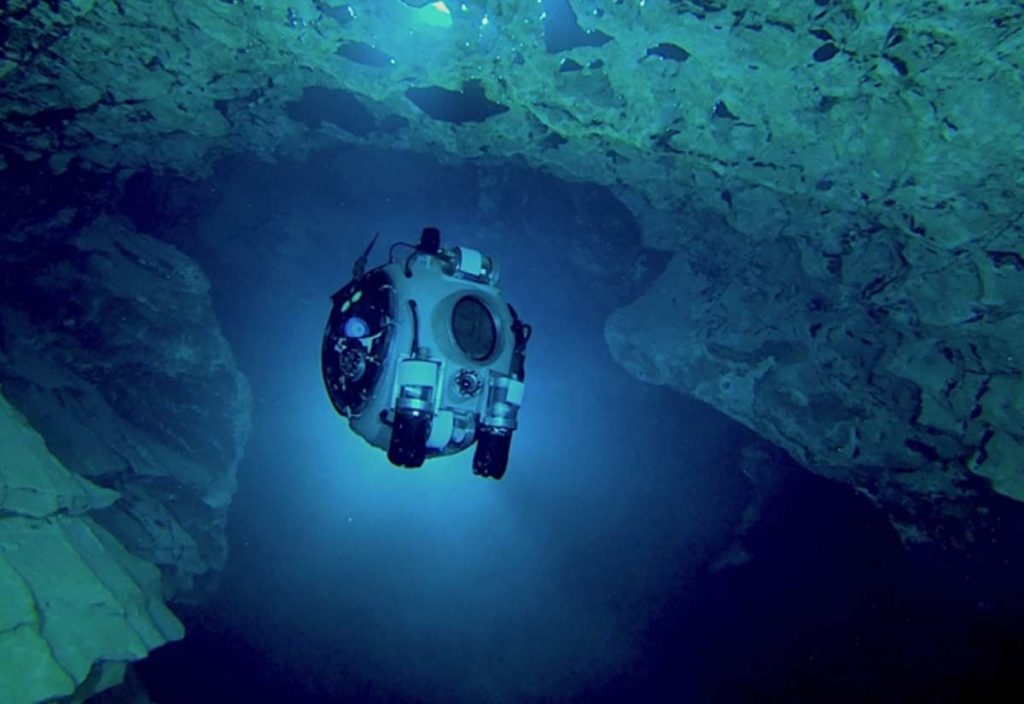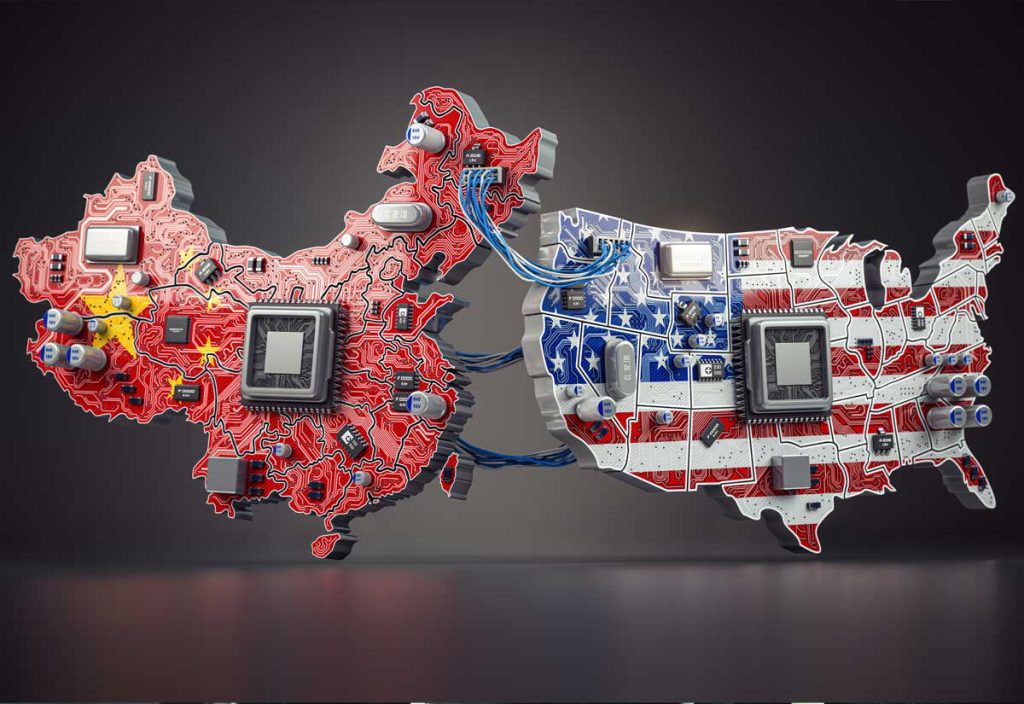Resource Erectors Tech Update 2021 Part Two
“Where no miner has gone before” makes a great headline but truthfully the 2021 robotic workforce is more accurately described as “going back to where no human miner can return”, at least for the lucrative extraction stage of the mining process. While robotics are finally taking center stage in the mining world, prototypes and field testing have been well underway since at least 2015. So how far have they come?
For exploration, robots can indeed go where no human has gone before, accomplishing the deep dives required without giving conniptions to the site’s MSHA/OSHA supervisors by proposing to send human miners deep underwater or underground into harm’s way. The untenable risk-reward factor for sending human manpower into hazardous environments to extract minerals and rare earth elements, and even high-demand construction aggregates from abandoned and eventually flooded mines has trapped a wealth of resources just ripe for the plucking.
But these vital mined resources are anything but low-hanging fruit. Especially when old mines have flooded to the point that cost-effective safe human exploration is not an option.
Flooded Mines and Rare Earth Element Recovery
In Europe, 8,500 abandoned mines have been identified as flooded. In the US these potential treasure troves number in the tens of thousands. In Australia 60,000 abandoned mines are taking center stage as a result of the global green movement and the resulting mining boom.
With hard lessons learned about disrupted global supply chains in the covid shutdown era, mining players around the world are under pressure from their respective governing authorities to take steps to bolster and develop robust domestic supply chains to reduce dependence on China’s near-monopoly on these vital resources. That makes abandoned mines worth a second look.
In the past, lower-grade ore deposits were often left intact and untouched because of low profit versus high OPEX factors. Those lower grades just weren’t worth the time and labor investment. Now, as the Rare Earth Element (REE) market expands exponentially to provide the “magnet metals” essential for the transition to a worldwide all-electric grid, those numbers have changed. Exploration and extraction are a much easier sell to investors when demand for earth-mined minerals is rising by 10% each year and is nowhere near its peak for this decade and beyond.
“From exploring flooded sites to providing alerts, use of robotics aims to “increase the arsenal of tools that can help miners work more safely and efficiently.”- Underground Robots: How Robotics Is Changing the Mining Industry
Robot UX-1 and UNEXMIN
Europe’s UNEXMIN GeoRobotics is touting the UX series of robots developed by the UNEXMIN project over recent years as “the robot of the future”. Here at Resource Erectors we’re more interested in what these AI-driven wonders of technology can do for mining production here and now. We weren’t disappointed in the current state of the art.
The company is developing advanced robotic platforms for immediate target markets including:
- Flooded shafts and tunnels in both abandoned and operating mines
- Flooded caves
- Channel systems
- Industrial cooling ponds and lakes
- Other underwater installations/structures that cannot be surveyed by any other traditional means.
In mining operations, the multi-robot platform of 3 robots working in unison will be deployed as a geological consulting service “capable of significantly extending the framework for mineral exploration and data acquisition methods, with robotic solutions (initially with underwater surveying) and integration of all available geoscientific data acquired for greenfield or brownfield deep deposits, exploration/development, covering land, the continental shelf, ocean floor and other harsh and difficult to access areas.” – https://www.unexmin.eu/unexmingeorobotics/
The immediate short-term goal for the UX series is commercial deployment for applications in commercial mine surveying, exploration, and geoscientific purposes. That’s sure to make a valuable contribution but what about the robots that can alleviate so many of the dangerous situations inherent in everyday mining operations, in which the risk to humans is so frequently too high?
Or when you just need some extra muscle?
Julius the Robot in ‘Reiche Zech” a silver-lead-zinc mine.
One foolproof safety measure for protecting human lives in hazardous mining scenarios is to remove the human completely from the equation and let the bots handle the hazardous environments. But first even the smartest mining robot needs to take some baby steps.
Unlike the R2D2 appearance of the free-diving underwater UX series, Julius actually looks like a mining machine ready to shovel up the big bucks. The four-wheel drive electric platform is based on an Innok Robotics vehicle, runs ROS Indigo, and has fewer sensors than Alexander. It has a UR5 manipulator with our Robotiq 3-Fingered Gripper.
Under development in Germany as part of the Mining ROX project since debuting to the public in 2016, Julius is perfectly capable of replacing humans. That’s especially important when modern mines can go as deep as the Empire State Building is tall, at depths exceeding 4 km, or nearly 2.5 miles under. And Julius won’t complain when he’s working at remote locations where no skilled workforce is available.
The tech watchers at Robohub talked with inventor and developer, Prof. Bernhard Jung about the Mining ROX collaboration between German universities to apply autonomous service robots to unstructured environments. In the long view for the future of mining Prof Jung sums up the number 1 item on every mining players wish list when he states;
“The deep mines of the future will be very hot places and ventilation and cooling systems will be economically prohibitive. In fact, a long-term vision in the mining research community is the fully automated “man-less mine.”
Right now Julius is lending his mechanical muscle as an aide to his human surveyor companions by lugging heavy equipment, collecting sensory data, and even taking over tedious manual measuring tasks in environments that can be strenuous for humans.
That’s why the versatile Robotiq 3-Finger Gripper was chosen for Julius’s manipulator. Now he can hold and operate handheld scanning devices made for human operation, such as XRF-scanners for on-site material analysis. According to Professor Bernhard “Only a hand-like gripper can firmly operate these devices, so the 3-Finger Gripper design was a natural choice.”
But Julius contributes more than just hands-on relief for human surveyors.
Sensory data is automatically geo-referenced by Julius’s visual localization capabilities. The robot even sets up its own data communications to the mine base station by placing WLAN relay stations as it works throughout the mine. That’s just practical on-the-job training for moving on to the next phase to have Julius set up a wireless communication network in an abandoned mine where minerals and essential elements are waiting.
About Resource Erectors
At Resource Erectors we match the top professional candidates with the top heavy industry companies who are seeking their talents and know that their employees are their most important assets. We bring decades of industry-specific experience to recruit and place professionals in engineering, mining, concrete, aggregates, construction materials, tunneling, civil construction, and more for the companies now building their dream teams in the US, Canada, and Australia.
Whether you’re recruiting for the best, or you’re a highly qualified professional who’s ready to make a strategic career move don’t hesitate to contact Resource Erectors today.








